
Composer, pianist, and bandleader Tadd Dameron's first album, Fontainebleau (1956), and his final work, The Magic Touch (1962), are remastered to highlight his sophisticated hard bop compositions for large ensembles, featuring influential players like Bill Evans, Philly Joe Jones, and Ron Carter, and showcasing Dameron's lasting impact on jazz before his untimely passing.
In Stock
Quantity in Basket: None
Log In to use our Wish List
Shipping Weight: 3.00 units
EU & UK Customers:
Discogs.com can handle your VAT payments
So please order through Discogs
Sample The Album:
Tadd Dameron-piano
Kenny Dorham-trumpet
Henry Coker-trombone
Sahib Shihab-alto saxophone
Joe Alexander-tenor saxophone
Cecil Payne-baritone saxophone
John Simmons-double bass
Shadow Wilson-drums
Joe Wilder-trumpet
Clark Terry-trumpet
Ernie Royal-trumpet
Charlie Shavers-trumpet
Jimmy Cleveland-trombone
Britt Woodman-trombone
Julius Wakins-French horn
Leo Wright-alto saxophone, flute
Jerry Dodgion-alto saxophone, flute
Johnny Griffin-tenor saxophone
Tate Houston-baritone saxophone
Bill Evans-piano
George Duvivier-double bass
Ron Carter-double bass
Philly Joe Jones-drums
Barbara Winfield-vocals
Click an artist name above to see in-stock items for that artist.
UPC: 752156117629
Label: ezz-thetics by Hat Hut Records Ltd
Catalog ID: ezz-thetics 1176
Squidco Product Code: 35318
Format: CD
Condition: New
Released: 2024
Country: Switzerland
Packaging: Cardboard Gatefold
Tracks 1-5 recorded at Vn Gelder Stuios, in Hackensack, New Jersey, on March 9th, 1956.
Tracks 6-15 recorded at Plaza Sound Studios, in NYC, in March nd April, 1962.
Tadd Dameron - Fontainebleau originally released in 1956 as a monophonic vinyl LP on the Prestige label with catalog code PRLP 7037.
Tadd Dameron And His Orchestra - The Magic Touch originally released in 1962 as a vinyl LP on the Riverside Records label with catalog code RLP 9419.
"Fontainebleau stands at the eastern angle of a kite-shape otherwise marked out by Paris in the north, Chartres to the west, and Orléans to the south west. Much of French history and culture fell within those dimensions. It was at Fontainebleau that an abdicating Napoleon said farewell to the Old Guard, before his last, desperate Hundred Days; in exile he called the palace "the house of the centuries". It had enjoyed a long history by then: Louis XIV's favourite hunting spot; visited by Queen Christina (who literally got away with murder) and by Peter the Great; survived the Revolution simply by being conveniently distant from the turbulence of Paris; occupied by Prussian troops in 1871, threatened again in 1914 and 1918, occupied again in 1940.
What's less well known is that from 1921, a wing of the palace has been occupied - in a more benign sense - by American music students. During the First World War, General Pershing decided that American military band music - a seed-ground for jazz as well as classical players - was in urgent need of improvement. His initiative led to the founding of the Conservatoire américain de Fontainebleau, the American Conservatory. No less distinguished than Aaron Copland, Virgil Thomson and Elliott Carter benefited from its influence. Jazz musicians somewhat less so, but at least one significant jazz player was profoundly affected by visiting the place. In May 1949 pianist Tadd Dameron was in Paris with the Miles Davis group, playing at the Paris Festival International de Jazz, part of a wider post-war rediscovery of Europe sparked by combat first, then by the GI Bill and a recognition that racism, in some quarters at least, worked in less overt and potentially fatal ways.
We don't know, but can strongly infer, what impact the sight of Fontainebleau had on the 32 year old Dameron, who had come up out of Cleveland as a respected pianist and arranger, working for Billy Eckstine, Jimmie Lunceford, Sarah Vaughan (he wrote "If You Could See Me Now" for her); among others who employed him were the forgotten man of jazz, Harlan Leonard and his Rockets and the r'n'b star Bull Moose Jackson, whose pianist was Benny Golson, set to become one of the premier composers in jazz, his work directly influenced by his encounter with Dameron.
When the histories or jazz are written, Tadley Ewing Peake Dameron (February 21, 1917 - March 8, 1965) rarely merits more than an appreciative acknowledgement or footnote. He was not a dramatic innovator or a showy pianist, and unlike some of his peers whose reputations were elevated by skirmishes with the laws, Dameron's incarceration on drugs charges in 1959, not long after his classic Fontainebleau and Mating Call had been released, seemed to mark pretty much the end of his public career and mild celebrity.
And yet Dameron's standing among musicians remains very high indeed, sufficient to spark occasional revivals of interest in his work. In the 1980s, drummer Philly Joe Jones, a passionate admirer, helped establish Dameronia, a big band dedicated to Tadd's music, and there is a small but distinguished category of Dameron tribute albums within the last decade or two. For many younger listeners, Dameron's name still resonates only as a side-reference on John Coltrane's Blue Train album, where Trane's "Lazy Bird" seems to be a backdoor variation on Tadd's "Lady Bird". Youngsters learning to play jazz piano may well also learn the "Dameron turnaround", a useful tritone substitution that has been rather colonized and renamed by Coltrane's disciples. This is largely textbook knowledge, though. How many actually turn to Dameron's own small but beautiful body of recorded music.
Fontainebleau was recorded in March 1956 by an elegant octet of strong middle-order professionals. Unlike many a Prestige recording of the time, it wasn't merely a blowing date. The title piece is a delightful, through-composed tone poem. What inspiration it draws from Dameron's visit to the palace is hard to say, though its long lines, ordered proportions and side-vistas might well be his attempt to evoke the place. One might just as easily ask what relationship to place had fellow-pianist John Lewis's "Versailles" or "Vendome". Some who haven't (yet) heard the album assume that "Fontainebleau" is a long quasi-classical suite. Far from it; it barely occupies five minutes. The rest of the album is every bit as strong, with the cleverly controlled "Delirium", the somewhat ironically titled (in view of what happened to Dameron next) "The Scene Is Clean" and the fun "Flossie Lou", which reveals itself to anyone who plays it as a version of "Jeepers Creepers". The set closes with something closer to a standard Prestige jam. "Bula-Beige" may be Dameron's attempt to spell bouillabaisse, perhaps also sampled on that French trip but it isn't just another blues gumbo but a sophisticated idea on which the band is invited to play around for a time.
Dameron's album The Magic Touch would also turn out to be his last. Having had his activities limited by a gaol sentence, Tadd was not a name to conjure with any more. Nevertheless, Orrin Keepnews assembled a band for him in the Riverside studio and he was able for the first time to give some of his work, including delightful retreads of "On A Misty Night", "Fontainebleau" and "If You Could See Now", a properly orchestral treatment, with a full trumpet section, French horn filling out the brasses, flutes complementing the reeds and bass. Barbara Winfield sang his biggest hit "If You Could See Me Now" and the equally fine but less celebrated "You're A Joy", and did so very well.
Rather shockingly, Dameron was dead less than three years later, still shy of his 50th birthday. Again, no great drama surrounded his passing and while he slipped quickly from public view, it was musicians who kept his qualities alive and in front of them. Dexter Gordon, with whom he had recorded in 1947, called him the "romantic" of modern jazz. One might argue that this is an odd designation for someone who seemed to espouse classical values - order, form, proportion - rather than romantic expressionism, which has been the default setting for much of post-bop jazz. But it is possible to reconcile both these thread; one might say it was done in the evolving architecture and history of Fontainebleau, and it certainly was in the music of Tadd Dameron, which is as expressive as it is formally assured."-Brian Morton, May 2024

The Squid's Ear!
Artist Biographies
• Show Bio for Tadd Dameron "Tadley Ewing Peake Dameron (February 21, 1917 - March 8, 1965) was an American jazz composer, arranger, and pianist. Born in Cleveland, Ohio, Dameron was the most influential arranger of the bebop era, but also wrote charts for swing and hard bop players. The bands he arranged for included those of Count Basie, Artie Shaw, Jimmie Lunceford, Dizzy Gillespie, Billy Eckstine, and Sarah Vaughan. In 1940-41 he was the piano player and arranger for the Kansas City band Harlan Leonard and his Rockets. He and lyricist Carl Sigman wrote "If You Could See Me Now" for Sarah Vaughan and it became one of her first signature songs. According to the composer, his greatest influences were George Gershwin and Duke Ellington. In the late 1940s, Dameron wrote arrangements for Gillespie's big band, who gave the première of his large-scale orchestral piece Soulphony in Three Hearts at Carnegie Hall in 1948. Also in 1948, Dameron led his own group in New York, which included Fats Navarro; the following year Dameron was at the Paris Jazz Festival with Miles Davis. From 1961 he scored for recordings by Milt Jackson, Sonny Stitt, and Blue Mitchell. Dameron also arranged and played for rhythm and blues musician Bull Moose Jackson. Playing for Jackson at that same time was Benny Golson, who was to become a jazz composer in his own right. Golson has said that Dameron was the most important influence on his writing. Dameron composed several bop and swing standards, including "Hot House", "If You Could See Me Now", "Our Delight", "Good Bait" (composed for Count Basie) and "Lady Bird". Dameron's bands from the late 1940s and early 1950s featured leading players such as Fats Navarro, Miles Davis, Dexter Gordon, Sonny Rollins, Wardell Gray, and Clifford Brown. In 1956 he led two sessions based on his compositions, released as the 1956 album "Fontainebleau" and the 1957 album "Mating Call". The latter featured John Coltrane. Dameron developed an addiction to narcotics toward the end of his career. He was arrested on drug charges in 1957 and 1958, and served time (1959-60) in a federal prison hospital in Lexington, Kentucky. After his release, Dameron recorded a single notable project as a leader, The Magic Touch, but was sidelined by health problems; he had several heart attacks before dying of cancer in 1965, at the age of 48. He was buried at Ferncliff Cemetery in Hartsdale, New York." ^ Hide Bio for Tadd Dameron • Show Bio for Kenny Dorham "McKinley Howard "Kenny" Dorham (August 30, 1924 - December 5, 1972) was an American jazz trumpeter, singer, and composer. Dorham's talent is frequently lauded by critics and other musicians, but he never received the kind of attention or public recognition from the jazz establishment that many of his peers did. For this reason, writer Gary Giddins said that Dorham's name has become "virtually synonymous with underrated." Dorham composed the jazz standard "Blue Bossa", which first appeared on Joe Henderson's album Page One. Dorham was one of the most active bebop trumpeters. He played in the big bands of Lionel Hampton, Billy Eckstine, Dizzy Gillespie, and Mercer Ellington and the quintet of Charlie Parker. He joined Parker's band in December 1948. He was a charter member of the original cooperative Jazz Messengers. He also recorded as a sideman with Thelonious Monk and Sonny Rollins, and he replaced Clifford Brown in the Max Roach Quintet after Brown's death in 1956. In addition to sideman work, Dorham led his own groups, including the Jazz Prophets (formed shortly after Art Blakey took over the Jazz Messengers name). The Jazz Prophets, featuring a young Bobby Timmons on piano, bassist Sam Jones, and tenorman J. R. Monterose, with guest Kenny Burrell on guitar, recorded a live album 'Round About Midnight at the Cafe Bohemia in 1956 for Blue Note. In 1963 Dorham added the 26-year-old tenor saxophonist Joe Henderson to his group, which later recorded Una Mas (the group also featured a young Tony Williams). The friendship between the two musicians led to a number of other albums, such as Henderson's Page One, Our Thing and In 'n Out. Dorham recorded frequently throughout the 1960s for Blue Note and Prestige Records, as leader and as sideman for Henderson, Jackie McLean, Cedar Walton, Andrew Hill, Milt Jackson and others. Dorham's later quartet consisted of some well-known jazz musicians: Tommy Flanagan (piano), Paul Chambers (double bass), and Art Taylor (drums). Their recording debut was Quiet Kenny for the Prestige Records' New Jazz label, an album which featured mostly ballads. An earlier quartet featuring Dorham as co-leader with alto saxophone player Ernie Henry had released an album together under the name "Kenny Dorham/Ernie Henry Quartet." They produced the album 2 Horns / 2 Rhythm for Riverside Records in 1957 with double bassist Eddie Mathias and drummer G.T. Hogan. In 1990 the album was re-released on CD under the name "Kenny Dorham Quartet featuring Ernie Henry." During his final years Dorham suffered from kidney disease, from which he died on December 5, 1972, aged 48. On June 25, 2019, The New York Times Magazine listed Kenny Dorham among hundreds of artists who recorded for record labels whose master recordings were reportedly destroyed in the 2008 Universal fire." ^ Hide Bio for Kenny Dorham • Show Bio for Sahib Shihab "Sahib Shihab (born Edmund Gregory; June 23, 1925 - October 24, 1989) was an American jazz and hard bop saxophonist (baritone, alto, and soprano) and flautist. He variously worked with Luther Henderson, Thelonious Monk, Fletcher Henderson, Tadd Dameron, Dizzy Gillespie, Kenny Clarke, John Coltrane and Quincy Jones among others. He was born in Savannah, Georgia, United States. Edmund Gregory first played alto saxophone professionally for Luther Henderson aged 13, and studied at the Boston Conservatory, and to perform with trumpeter Roy Eldridge. He played lead alto with Fletcher Henderson in the mid-1940s. He was one of the first jazz musicians to convert to Islam and changed his name in 1947. He belonged to the Ahmadiyya sect of Islam. - American jazz double bassist During the late 1940s, Shihab played with Thelonious Monk, and on July 23, 1951 he recorded with Monk (later issued on the album Genius of Modern Music: Volume 2). During this period, he also appeared on recordings by Art Blakey, Kenny Dorham and Benny Golson. The invitation to play with Dizzy Gillespie's big band in the early 1950s was of particular significance, as it marked Shihab's switch to baritone. On August 12, 1958, Shihab was one of the musicians photographed by Art Kane in his photograph known as "A Great Day in Harlem". In 1959, he toured Europe with Quincy Jones, after becoming disillusioned with racial politics in United States and ultimately settled in Scandinavia, first in Stockholm, Sweden and from 1964 in Copenhagen, Denmark. He worked for Copenhagen Polytechnic and wrote scores for television, cinema and theatre. He wrote a ballet based on the Danish writer Hans Christian Andersen's fairy tale, The Red Shoes. In Denmark, Shihab performed with local musicians such as the bass player Niels-Henning Ørsted Pedersen amongst others. Together with pianist Kenny Drew, he ran a publishing firm and record company. In 1961, he joined the Kenny Clarke/Francy Boland Big Band and remained a member of the band for the 12 years it existed. He married a Danish woman and raised a family in Europe. In the Eurovision Song Contest 1966, Shihab accompanied Lill Lindfors and Svante Thuresson on stage for the Swedish entry "Nygammal Vals". In 1973, Shihab returned to the United States for a three-year hiatus, working as a session musician for rock and pop artists and undertaking work as a copyist for local musicians. He spent his remaining years between New York and Copenhagen and played in a partnership with Art Farmer. He also led his own jazz combo called Dues. From 1986, Shihab was a visiting artist at Rutgers University. Shihab died from liver cancer on October 24, 1989, in Nashville, Tennessee, United States, aged 64." ^ Hide Bio for Sahib Shihab • Show Bio for Clark Terry "Clark Terry's career in jazz spanned more than seventy years. He was a world-class trumpeter, flugelhornist, educator, composer, writer, trumpet/flugelhorn designer, teacher and NEA Jazz Master. He performed for eight U.S. Presidents, and was a Jazz Ambassador for State Department tours in the Middle East and Africa. More than fifty jazz festivals featured him at sea and on land in all seven continents. Many were named in his honor. He was one of the most recorded musicians in the history of jazz, with more than nine-hundred recordings. Clark's discography reads like a "Who's Who In Jazz," with personnel that included greats such as Quincy Jones, Ella Fitzgerald, Oscar Peterson, Dizzy Gillespie, Dinah Washington, Ben Webster, Aretha Franklin, Charlie Barnet, Doc Severinsen, Ray Charles, Billy Strayhorn, Dexter Gordon, Thelonious Monk, Billie Holiday, Gerry Mulligan, Sarah Vaughan, Coleman Hawkins, Zoot Sims, Milt Jackson, Bob Brookmeyer, and Dianne Reeves. Among his numerous recordings, he was featured with the Duke Ellington Orchestra, Count Basie Orchestra, Dutch Metropole Orchestra, Chicago Jazz Orchestra, Woody Herman Orchestra, Herbie Mann Orchestra, Jimmy Heath Orchestra, Donald Byrd Orchestra, and many other large ensembles - high school and college ensembles, his own duos, trios, quartets, quintets, sextets, octets, and two big bands - Clark Terry's Big Bad Band and Clark Terry's Young Titans of Jazz. His Grammy and NARAS Awards include: 2010 Grammy Lifetime Achievement Award, NARAS President's Merit Award, three Grammy nominations, and two Grammy certificates. His original compositions include more than two hundred jazz songs, and he co-authored books such as Let's Talk Trumpet: From Legit to Jazz, Interpretation of the Jazz Language and Clark Terry's System of Circular Breathing for Woodwind and Brass Instruments with Phil Rizzo. He won several awards for Clark: The Autobiography of Clark Terry, which was published in 2011 by the University of California Press. A quote from the Preface which was written by Quincy Jones says, "He has always been loving and encouraging, and he has helped countless aspiring musicians. Even at ninety-three years old, he's still making dreams come true for young hopefuls who want to learn from a true master. Still making time to share his wisdom." Writer Chuck Berg said, "Clark Terry is one of contemporary music's great innovators, and justly celebrated for his great technical virtuosity, swinging lyricism, and impeccable good taste. Combining these with the gifts of a great dramatist, Clark is a master storyteller whose spellbinding musical 'tales' leave audiences thrilled and always awaiting more." After serving in the navy from 1942-1945 during the historic "Great Lakes Experience," Clark's musical star rose rapidly with successful stints in the bands of George Hudson, Charlie Barnet, Charlie Ventura, Eddie Vinson, and then in 1948 - the great Count Basie. In addition to his outstanding musical contribution to these bands, Mr. Terry exerted a positive influence on musicians such as Miles Davis and Quincy Jones, both of whom credit Clark as a formidable influence during the early stages of their careers. In 1951 Clark was asked to join Maestro Duke Ellington's renowned orchestra where he stayed for eight years as a featured soloist. Following a tour in the "Free and Easy" musical in 1959 with music director, Quincy Jones, Clark's international recognition soared when he broke the color barrier by accepting an offer in 1960 from the National Broadcasting Company to become its first African American staff musician. He was with NBC for twelve years as one of the spotlighted musicians in the Tonight Show band. During that time, he scored a smash hit as a singer with his irrepressible "Mumbles." After his stint at NBC, between his performances and recording dates at concerts, clubs, cruises and jazz festivals, Clark became more dedicated to his greatest passion - jazz education. He organized a Harlem youth band which became the seed for Jazz Mobile in New York City. Billy Taylor then asked him to teach in educational institutions. This motivated Clark to organize other youth bands and influence many other jazz legends to teach with him at jazz camps, clinics and festivals at colleges and universities, while still maintaining a hectic performance and recording schedule for the next thirty years. On December 14, 2010, he celebrated his ninetieth birthday, and his students continue to fly from Australia, Israel, Austria, Canada, the United States, and many other locations to Clark's home for jazz lessons. Clark said, "Teaching jazz allows me to play a part in making dreams come true for aspiring musicians." To celebrate his contributions to jazz education, he was honored with fifteen honorary doctorates, and three adjunct professorships. He also received numerous awards from high schools, junior high schools and elementary schools where he shared his knowledge of jazz. Among his many awards, he received honors from his hometown in St. Louis, Missouri which included a Hall of Fame Award from Vashon High School; a Walk of Fame Award and Star on Blueberry Hill in St. Louis, and a life-sized wax figure and memorabilia display at the Griot Museum. Clark received dozens of other Hall and Wall of Fame Awards, Jazz Master Awards, keys to cities, lifetime achievement awards (four were presented to him in 2010), trophies, plaques and other prestigious awards. The French and Austrian Governments presented him with their esteemed Arts and Letters Awards, and he was knighted in Germany. At William Paterson University in Wayne, New Jersey, where Clark was an adjunct professor for many years, there is a Living Jazz Archive, which features a collection of his memorabilia. Students are taught about Clark's impact in the history of jazz, and tours are scheduled for visiting groups of students from public schools, from other colleges and universities, and the general public. Details and pictures of this extraordinary collection may be seen at livingjazzarchives.org." ^ Hide Bio for Clark Terry • Show Bio for Johnny Griffin "John Arnold Griffin III (April 24, 1928 - July 25, 2008) was an American jazz tenor saxophonist. Nicknamed "the Little Giant" for his short stature and forceful playing, Griffin's career began in the mid-1940s and continued until the month of his death. A pioneering figure in hard bop, Griffin recorded prolifically as a bandleader in addition to stints with pianist Thelonious Monk, drummer Art Blakey, in partnership with fellow tenor Eddie "Lockjaw" Davis and as a member of the Kenny Clarke/Francy Boland Big Band after he moved to Europe in the 1960s. In 1995, Griffin was awarded an Honorary Doctorate of Music from Berklee College of Music. Griffin studied music at DuSable High School in Chicago under Walter Dyett, starting out on clarinet before moving on to oboe and then alto saxophone. While still at high school at the age of 15, Griffin was playing with T-Bone Walker in a band led by Walker's brother. Alto saxophone was still his instrument of choice when he joined Lionel Hampton's big band, three days after his high school graduation, but Hampton encouraged him to take up the tenor, playing alongside Arnett Cobb. He first appeared on a Los Angeles recording with Hampton's band in 1945 at the age of 17. By mid-1947, Griffin and fellow Hampton band member Joe Morris, had formed a sextet made up of local musicians, including George Freeman, where he remained for the next two years. His playing can be heard on early rhythm and blues recordings for Atlantic Records. By 1951, Griffin was playing baritone saxophone in an R&B septet led by former bandmate Arnett Cobb. After returning to Chicago from two years in the Army, Griffin began to establish a reputation as one of the premiere saxophonists in that city. Thelonious Monk enthusiastically encouraged Orrin Keepnews of the Riverside label to sign the young tenor, but before he could act Blue Note had signed Griffin. He joined Art Blakey's Jazz Messengers in 1957, and his recordings from that time include an album joining together the Messengers and Thelonious Monk. Griffin then succeeded John Coltrane as a member of Monk's Five Spot quartet; he can be heard on the albums Thelonious in Action and Misterioso. Griffin's unique style, based on an astounding technique, included a vast canon of bebop language. He was known to quote generously from classical, opera and other musical forms. A prodigious player, he was often subjected to "cutting sessions" (a musical battle between two musicians) involving a legion of tenor players, both in his hometown Chicago with Hank Mobley and Gene Ammons, and on the road. Diminutive, he was distinctive as a fashionable dresser, a good businessman, and a well-liked bandleader to other musicians.Johnny Griffin backstage at Bach Dancing & Dynamite Society, Half Moon Bay, California, 1985 Griffin was leader on his first Blue Note album Introducing Johnny Griffin in 1956. Also featuring Wynton Kelly on piano, Curly Russell on bass and Max Roach on drums, the recording brought Griffin critical acclaim. The album A Blowin' Session (1957) featured John Coltrane and Hank Mobley. He played with Art Blakey's Jazz Messengers for a few months in 1957 and in the Thelonious Monk Sextet and Quartet (1958). During this period, he recorded a set with Clark Terry on Serenade to a Bus Seat, featuring the rhythm trio of Wynton Kelly, Paul Chambers, and Philly Joe Jones. Griffin moved to France in 1963 and to the Netherlands in 1978. His relocation was the result of several factors, including income tax problems, a failing marriage and feeling "embittered by the critical acceptance of free jazz" in the United States, as journalist Ben Ratliff wrote. Apart from appearing regularly under his own name at jazz clubs such as London's Ronnie Scott's, Griffin became a "first choice" sax player for visiting US musicians touring the continent during the 1960s and 1970s. In 1965, he recorded albums with Wes Montgomery. He briefly rejoined Monk's groups (an Octet and Nonet) in 1967. From 1967 to 1969, he was part of the Kenny Clarke/Francy Boland Big Band. Griffin and Davis met up again in 1970 and recorded Tough Tenors Again 'n' Again, and again with the Dizzy Gillespie Big 7 at the Montreux Jazz Festival. In the late 1970s, Griffin recorded with Peter Herbolzheimer and His Big Band, which also included, among others, Nat Adderley, Derek Watkins, Art Farmer, Slide Hampton, Jiggs Whigham, Herb Geller, Wilton Gaynair, Stan Getz, Gerry Mulligan, Rita Reys, Jean "Toots" Thielemans, Niels-Henning Ørsted Pedersen, Grady Tate, and Quincy Jones as arranger. He also recorded with the Nat Adderley Quintet in 1978, having previously recorded with Adderley in 1958. In 1978, Griffin and Dexter Gordon returned to the U.S., and the two performed at the Ann Arbor Blues and Jazz Festival, before recording Live at Carnegie Hall. Griffin's last concert was in Hyères, France on July 21, 2008. On July 25, 2008, he died of a heart attack at the age of 80 in Mauprévoir, near Availles-Limouzine, France." ^ Hide Bio for Johnny Griffin • Show Bio for Bill Evans "William John Evans (August 16, 1929 - September 15, 1980) was an American jazz pianist and composer who worked primarily as the leader of his trio. His use of impressionist harmony, interpretation of traditional jazz repertoire, block chords, and trademark rhythmically independent, "singing" melodic lines continues to influence jazz pianists today. Born in Plainfield, New Jersey, United States, he was classically trained at Southeastern Louisiana University and the Mannes School of Music, in New York City, where he majored in composition and received the Artist Diploma. In 1955, he moved to New York City, where he worked with bandleader and theorist George Russell. In 1958, Evans joined Miles Davis's sextet, which in 1959, then immersed in modal jazz, recorded Kind of Blue, the best-selling jazz album ever. In late 1959, Evans left the Miles Davis band and began his career as a leader, with bassist Scott LaFaro and drummer Paul Motian, a group now regarded as a seminal modern jazz trio. In 1961, two albums were recorded at an engagement at New York's Village Vanguard jazz club, Sunday at the Village Vanguard and Waltz for Debby; a complete set of the Vanguard recordings on three CDs was issued decades later. However, ten days after this booking ended, LaFaro died in a car accident. After months of seclusion, Evans reemerged with a new trio, featuring bassist Chuck Israels. In 1963, Evans recorded Conversations with Myself, a solo album produced with overdubbing technology. In 1966, he met bassist Eddie Gómez, with whom he worked for the next 11 years. During the mid-1970s Bill Evans collaborated with the singer Tony Bennett on two critically acclaimed albums: The Tony Bennett/Bill Evans Album (1975) and Together Again (1977). Many of Evans's compositions, such as "Waltz for Debby" and "Time Remembered", have become standards, played and recorded by many artists. Evans received 31 Grammy nominations and seven awards, and was inducted into the DownBeat Jazz Hall of Fame." ^ Hide Bio for Bill Evans • Show Bio for Ron Carter "Ron Carter is among the most original, prolific, and influential bassists in jazz. He has recorded over 2200 albums, and has a Guinness world record to prove it! In Jazz: Over his 60 year career, he has recorded with so many of the jazz greats greats: Lena Horne, Bill Evans, B.B. King, Dexter Gordon, Wes Montgomery, Bobby Timmons, Eric Dolphy, Cannonball Adderley and Jaki Byard to name a few. From 1963 to 1968, he was a member of the acclaimed Miles Davis Quintet. In other genres: After leaving the quintet he embarked on a prolific 50-year free lance career that spanned vastly different music genres and continues to this day. He recorded with Aretha Franklin, appeared on the seminal hip-hop album Low End Theory with a Tribe Called Quest, wrote and recorded pieces for string quartets and Bach chorales for 2-8 basses and accompanied Danny Simmons on a spoken word album. As a leader: Carter spends at least half the year on worldwide tours with his various groups. The Ron Carter Trio, The Ron Carter quartet, the Ron Carter Nonet and Ron Carter’s Great Big Band. He has recorded multiple albums with his groups. As an author: Carter shares his expertise in the series of books he authored, where he explains his creative process and teaches bassists of all levels to improve their skills and develop their own unique sound. He also penned his autobiography “Finding the Right Notes” which is available in print and also as an audiobook read by the Maestro himself. As a teacher: Carter has lectured, conducted, and performed at clinics and master classes, instructing jazz ensembles and teaching the business of music at numerous universities. He was Artistic Director of the Thelonious Monk Institute of Jazz Studies while it was located in Boston and, after 18 years on the faculty of the Music Department of The City College of New York, he is now Distinguished Professor Emeritus, he currently teaches at Manhattan School of Music. In film scoring: In addition to scoring and arranging music for many films, including some projects for Public Broadcasting System, Carter composed music for A Gathering of Old Men, starring Lou Gosset Jr., The Passion of Beatrice directed by Bertrand Tavernier, and Blind Faith starring Courtney B. Vance. Film appearances: Most jazz documentaries feature the Maestro because of his indelible contribution to the genre. Ken Burns “Jazz”, “Birth of the Cool” about Miles Davis, "It Must be Schwing", the story of the Blue Note and many more. He also appeared as himself in HBO’s hit series “Treme” and was the bassist on soundtracks of Twin Peaks, Bird, and way too many others to mention. Education: Carter earned a bachelor of music degree from the Eastman School in Rochester and a master's degree in double bass from the Manhattan School of Music in New York City. He has also received five honorary doctorates, from the New England Conservatory of Music, Manhattan School of Music, University of Rochester, Juilliard and Berklee, and was the 2002 recipient of the prestigious Hutchinson Award from the Eastman School at the University of Rochester." ^ Hide Bio for Ron Carter • Show Bio for Philly Joe Jones "Joseph Rudolph "Philly Joe" Jones (July 15, 1923 - August 30, 1985) was an American jazz drummer. As a child, Jones appeared as a featured tap dancer on The Kiddie Show on the Philadelphia radio station WIP. He was in the US Army during World War II. In 1947 he became the house drummer at Café Society in New York City, where he played with the leading bebop players of the day, including Tadd Dameron. From 1955 to 1958, Jones toured and recorded with Miles Davis Quintet - a band that became known as "The Quintet" (along with Red Garland on piano, John Coltrane on sax, and Paul Chambers on bass). Davis acknowledged that Jones was his favorite drummer, and stated in his autobiography that he would always listen for Jones in other drummers. From 1958, Jones worked as a leader, but continued to work as a sideman with other musicians, including Bill Evans and Hank Mobley. Evans, like Davis, also openly stated that Jones was his all-time favorite drummer. Between late 1967 and 1972 Jones lived in London and Paris, performing and recording with musicians including Archie Shepp, Mal Waldron and Hank Mobley. For two years (1967-69) Jones taught at a specially organized school in Hampstead, London, but was prevented from otherwise working in the UK by the Musicians' Union. His 1968 album Mo' Joe (also released as Trailways Express) was recorded in London with local musicians (including Peter King, Harold McNair, Chris Pyne, Kenny Wheeler and others).Later years Jones toured with Bill Evans in 1976 and 1978, recorded for Galaxy in 1977-79, and made studio and live recordings with Red Garland in 1977. In 1981, Jones helped to found the group Dameronia, dedicated to the music of the composer Tadd Dameron, and led it until Jones' death from a heart attack in 1985." ^ Hide Bio for Philly Joe Jones
12/9/2025
Have a better biography or biography source? Please Contact Us so that we can update this biography.
12/9/2025
Have a better biography or biography source? Please Contact Us so that we can update this biography.
12/9/2025
Have a better biography or biography source? Please Contact Us so that we can update this biography.
12/9/2025
Have a better biography or biography source? Please Contact Us so that we can update this biography.
12/9/2025
Have a better biography or biography source? Please Contact Us so that we can update this biography.
12/9/2025
Have a better biography or biography source? Please Contact Us so that we can update this biography.
12/9/2025
Have a better biography or biography source? Please Contact Us so that we can update this biography.
12/9/2025
Have a better biography or biography source? Please Contact Us so that we can update this biography.
Track Listing:
1. Fontainebleau 4:55
2. Delirium 5:05
3. The Scene Is Clean 5:06
4. Flossie Lou 4:54
5. Bula-Beige 11:25
6. On A Misty Night 3:00
7. Fontainebeleau 4:12
8. Just Plain Talkin' 4:55
9. If You Could See Me Now 3:19
10. Our Delight 2:51
11. Dial B For Beauty 3:01
12. Look, Stop And Listen 4:57
13. Bevan's Birthday 3:32
14. You're A Joy 3:43
15. Swift As The Wind 3:15
Hat Art
Improvised Music
Jazz
Jazz & Improvisation Based on Compositions
Melodic and Lyrical Jazz
Large Ensembles
Jazz Reissues
Staff Picks & Recommended Items
New in Improvised Music
Recent Releases and Best Sellers
Hat Hut Masters Sale
Search for other titles on the label:
ezz-thetics by Hat Hut Records Ltd.

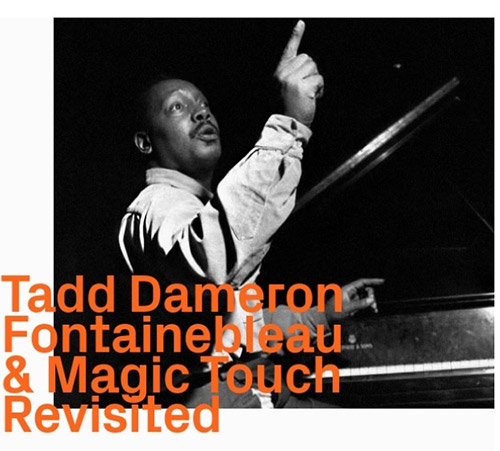
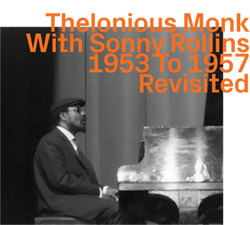
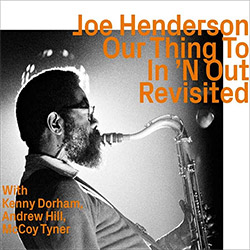


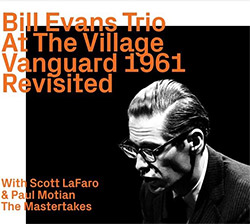
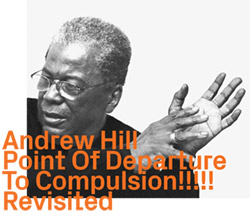

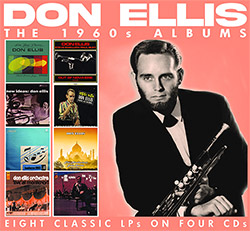
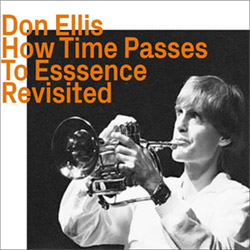

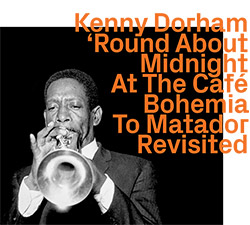
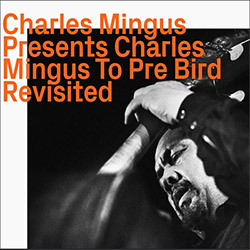

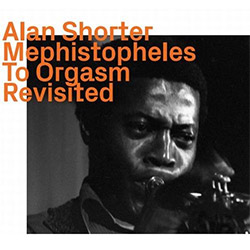


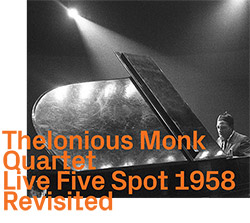

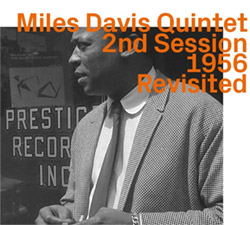

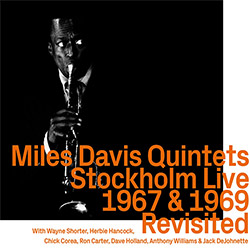

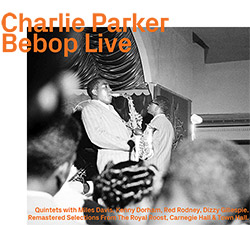
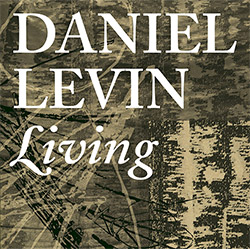







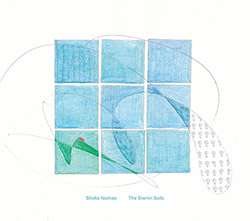
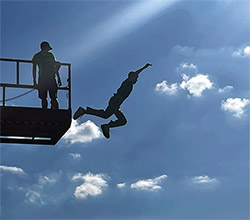
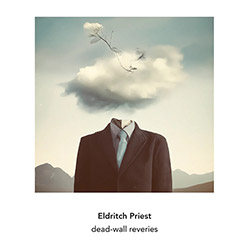
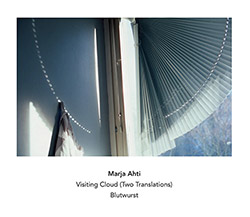

![Agnel, Sophie: Learning [VINYL]](https://www.teuthida.com/productImages/misc4/36841.jpg)

![Monaco, Amanda (w/ Michael Attias / Sean Conly / Satoshi Takeishi) : Deathblow [VINYL]](https://www.teuthida.com/productImages/misc4/36956.jpg)
![Frey, Jurg with ensemble]h[iatus: Je Laisse A La Nuit Son Poids D](https://www.teuthida.com/productImages/misc4/36988.jpg)
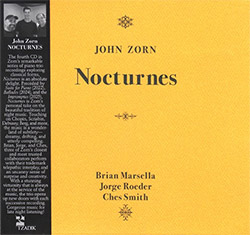
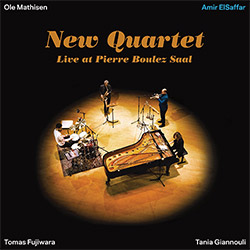
![ElSaffar, Amir / New Quartet : Live at Pierre Boulez Saal [VINYL]](https://www.teuthida.com/productImages/misc4/36830.jpg)
![Zorn, John: The Song of Songs [CD + CD BOOK]](https://www.teuthida.com/productImages/misc4/36923.jpg)
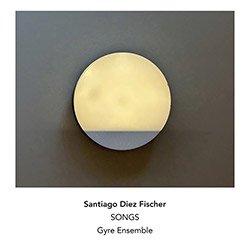
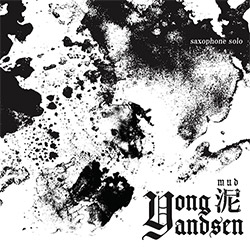



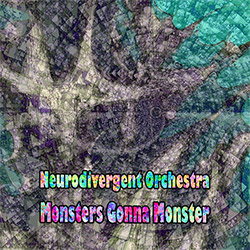
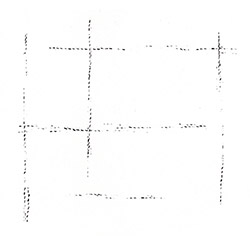

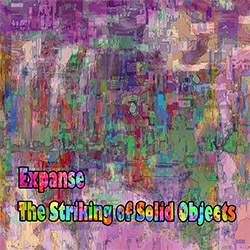
![Musicworks Magazine: #152 Fall 25 [MAGAZINE + CD]](https://www.teuthida.com/productImages/misc4/37004.jpg)
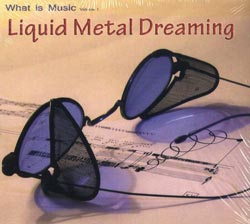




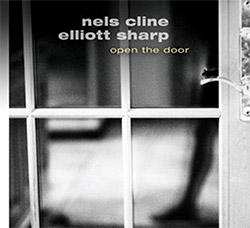
![[ahmed] (Thomas / Grip / Gerbal / Wright): Sama](https://www.teuthida.com/productImages/misc4/36976.jpg)

![Cleaver, Gerald / Brandon Lopez / Hprizm: In The Wilderness [COLOR VINYL]](https://www.teuthida.com/productImages/misc4/33060.jpg)
![McPhee, Joe : Defiant Jazz: a Joe McPhee Taster [VINYL]](https://www.teuthida.com/productImages/misc4/36859.jpg)
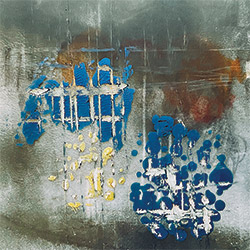
![Mateen, Sabir / Patrick Holmes / Federico Ughi : Survival Situation [LTD VINYL LP + DOWNLOAD]](https://www.teuthida.com/productImages/misc4/29891.jpg)
![Tucker, Dave / Pat Thomas / Thurston Moore / Mark Sanders: Educated Guess Vol. 1 [COLORED VINYL]](https://www.teuthida.com/productImages/misc4/30183.jpg)
![Sarian, Michael / Matthew Putman: A Lifeboat (Part I) [COLORED VINYL]](https://www.teuthida.com/productImages/misc4/30426.jpg)
![Carter, Daniel / Tobias Wilner / Djibril Toure / Federico Ughi: New York United Volume 2 [COLOR VINYL]](https://www.teuthida.com/productImages/misc4/30665.jpg)
![Mela, Francisco feat. Matthew Shipp / William Parker: Music Frees Our Souls, Vol. 1 [BLUE VINYL]](https://www.teuthida.com/productImages/misc4/30999.jpg)
![Heroes Are Gang Leaders: LeAutoRoiOgraphy [COLORED VINYL]](https://www.teuthida.com/productImages/misc4/32253.jpg)
![Carter, Daniel / Matthew Shipp / William Parker / Gerald Cleaver: Welcome Adventure! Vol. 2 [COLOR VINYL]](https://www.teuthida.com/productImages/misc4/32385.jpg)
![Carter, Daniel / Evan Strauss / 5-Track / Sheridan Riley: The Uproar In Bursts Of Sound And Silence [COLORED VINYL]](https://www.teuthida.com/productImages/misc4/32515.jpg)
![Ackerley, Jessica / Patrick Shiroishi / Chris Williams / Luke Stewart / Jason Nazary: SSWAN: Invisibility is an Unnatural Disaster [COLORED VINYL]](https://www.teuthida.com/productImages/misc4/32586.jpg)
![Mela, Francisco feat. Cooper-Moore / William Parker: Music Frees Our Souls, Vol. 2 [COLORED VINYL]](https://www.teuthida.com/productImages/misc4/32735.jpg)
![Amba, Zoh / William Parker / Francisco Mela: O Life, O Light Vol. 2 [COLOR VINYL]](https://www.teuthida.com/productImages/misc4/33059.jpg)
![Dikeman, John / Pat Thomas / John Edwards / Steve Noble: Volume 1 [COLORED VINYL]](https://www.teuthida.com/productImages/misc4/33099.jpg)
![Dikeman, John / Pat Thomas / John Edwards / Steve Noble: Volume 2 [COLOR VINYL]](https://www.teuthida.com/productImages/misc4/33184.jpg)
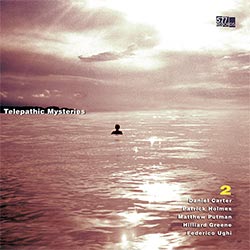
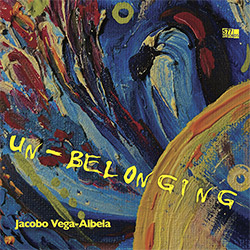

![Genthon, Anouck / Lionel Marchetti: Suite Blanche [2 CDs]](https://www.teuthida.com/productImages/misc4/36642.jpg)
![Toeplitz, Kasper T.: Erosions Programmees [CD + BOOKLET]](https://www.teuthida.com/productImages/misc4/36639.jpg)
![Gate, The : Amost Live [CASSETTE + MAGAZINE]](https://www.teuthida.com/productImages/misc4/36836.jpg)
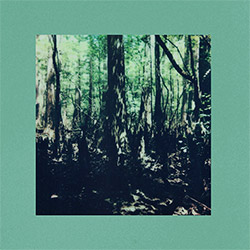


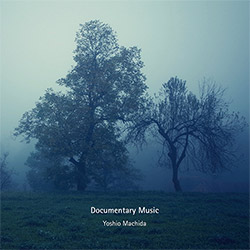
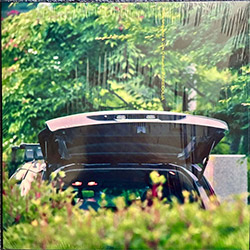
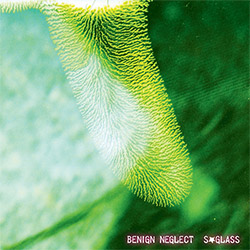
![A Magic Whistle: The Solar Cell [VINYL]](https://www.teuthida.com/productImages/misc4/36658.jpg)

![McGee, Hal: Columbus Expedition [Cassette w/ Download]](https://www.teuthida.com/productImages/misc4/36650.jpg)
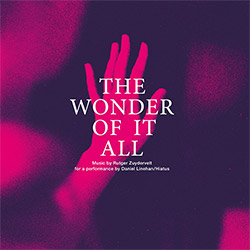

![Jaeger, Kassel: Fernweh [VINYL 2 LPs]](https://www.teuthida.com/productImages/misc4/36541.jpg)
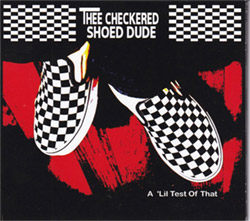




![+DOG+: The Light Of Our Lives [2 CDs]](https://www.teuthida.com/productImages/misc4/36009.jpg)


![Eternities: Rides Again [CASSETTE]](https://www.teuthida.com/productImages/misc4/36247.jpg)

![Lopez, Francisco: Untitled (2021-2022) [2 CDs]](https://www.teuthida.com/productImages/misc4/36438.jpg)



![Frey, Jurg : Composer, Alone [3 CDs]](https://www.teuthida.com/productImages/misc4/36927.jpg)
![Pisaro-Liu, Michael: Within (2) / Appearance (2) [2 CDs]](https://www.teuthida.com/productImages/misc4/36831.jpg)

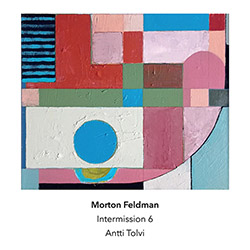
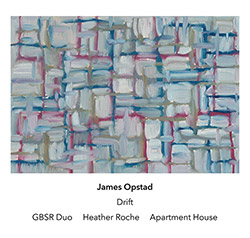
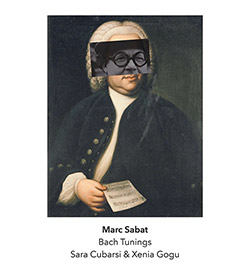
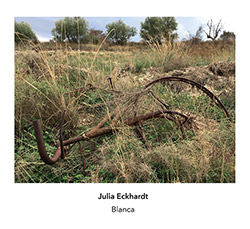
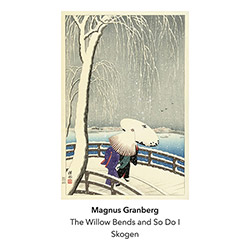
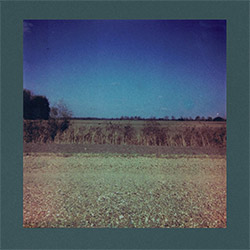
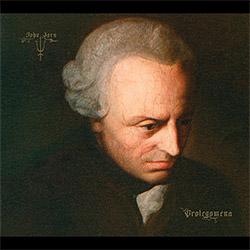
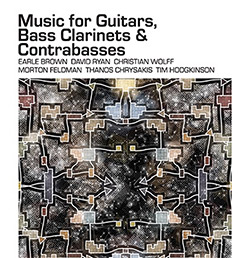

![Musicworks Magazine: #151 Summer 25 [MAGAZINE + CD]](https://www.teuthida.com/productImages/misc4/36559.jpg)

![Brown, Dan / Dan Reynolds: Live At The Grange Hall [unauthorized][CASSETTE]](https://www.teuthida.com/productImages/misc4/36245.jpg)



![Coultrain: Mundus [COLORED VINYL]](https://www.teuthida.com/productImages/misc4/33056.jpg)
![Hprizm: Signs Remixed [COLORED VINYL]](https://www.teuthida.com/productImages/misc4/30635.jpg)
![Halls Of the Machine: All Tribal Dignitaries [CASSETTE w/ DOWNLOAD]](https://www.teuthida.com/productImages/misc4/36134.jpg)


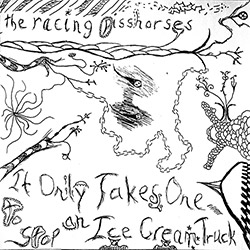
![Koenjihyakkei: Live at Club Goodman [2 CDs]](https://www.teuthida.com/productImages/misc4/36111.jpg)

![Sorry For Laughing (G. Whitlow / M. Bates / Dave-Id / E. Ka-Spel): Rain Flowers [2 CDS]](https://www.teuthida.com/productImages/misc4/35985.jpg)

![Rolando, Tommaso / Andy Moor : Biscotti [CASSETTE w/ DOWNLOADS]](https://www.teuthida.com/productImages/misc4/36106.jpg)


![Electric Bird Noise / Derek Roddy: 8-10-22 [CD EP]](https://www.teuthida.com/productImages/misc4/35970.jpg)








![Elephant9 : Mythical River [VINYL]](https://www.teuthida.com/productImages/misc4/34624.jpg)



![Elephant9 with Terje Rypdal: Catching Fire [VINYL 2 LPs]](https://www.teuthida.com/productImages/misc4/35355.jpg)
![Deerlady (Obomsawin, Mali / Magdalena Abrego): Greatest Hits [VINYL]](https://www.teuthida.com/productImages/misc4/34876.jpg)
![Coley, Byron: Dating Tips for Touring Bands [VINYL]](https://www.teuthida.com/productImages/misc4/17906.jpg)

![Lost Kisses: My Life is Sad & Funny [DVD]](https://www.teuthida.com/productImages/misc4/lostKissesDVD.jpg)